I'm trying to build an automatic night light circuit based on some designs I found online.
Here's the circuit I built:
The problem is that the transistor BC327 keeps failing. The circuit works for a couple of seconds and suddenly the transistor doesn't turn off anymore, sometimes it happens while it's running and sometimes it happens when I unplug and re-plug the power couple of times.
The capacitive dropper circuit is supposed to limit the current to about 7 mA (measured it with a multimeter,) but I tried to place a 100 ohm resistor on the transistor base and also the TRIAC gate. I also tried using an NPN transistor instead (2A2222), but still the same problem.
A couple of times the 22 ohm inrush current resistor (1/4 W) got burned when I plugged in the power.
I'm really struggling with this circuit and burned a dozen of transistors in couple of days. I really want to know what is the problem rather than just fixing the problem by using another design, so I'd really appreciate it if you could help me figure out what's wrong with my circuit.
Please tell me if you need any additional information.

